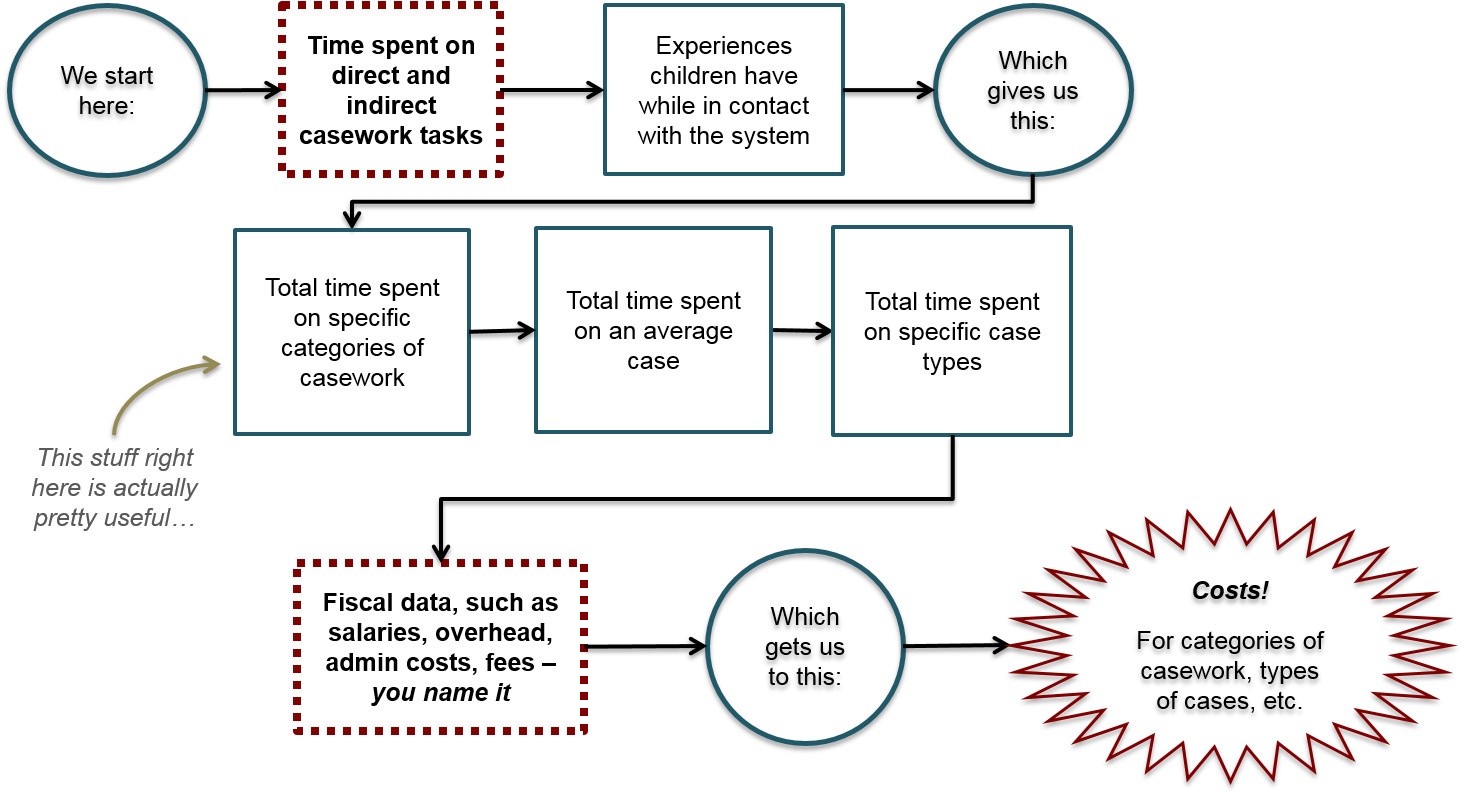Time Use Studies
Studying workforce time use to improve outcomes for children and families

Talking to children, calling foster parents, and supervising visits are only a few of the tasks that appear on the daily schedule of a social worker. Mapping out these tasks and the time spent on them in more detail allows us to build evidence about how time is used, the cost of that time to the system and the connection between time use and outcomes for children and families.
This is the focus of the time use studies, conducted by a team of Data Center researchers led by Dr. Fred Wulczyn, Dr. Sara Feldman, Molly Van Drunen, and Kerry Price.
The Data Center team adapted the U.K. Cost Calculator for Children’s Services approach to studying and costing time use originally developed by Harriet Ward and colleagues at Loughborough University. At the heart of the U.S. adaptation, referred to as the Time Use and Costing System (TUCS), is the original organizing framework that classifies what workers do on a daily basis into specific processes. For example, casework with foster children is divided into eight categories, such as developing initial service plans and preparing for court. The framework also accounts for differences in case type (such as babies or children with special needs) and role type (such as caseworkers or supervisors).

One great benefit of the TUCS method compared to more traditional time use methods is the minimal data collection burden it places on staff. We first only ask a subset of staff to participate in a single hour-long focus group. After that, the full range of case-carrying staff is asked to participate in a one-time online survey. Then we validate these data, all without placing significant additional demands on staff.
Although interest in this approach often starts with an emphasis on the cost calculator, stakeholders also find great value in the time use data and what it says about the work being done on a day-to-day basis. For example, in one state where we have done time use studies, evidence showed that length of stay and how much time was spent in face-to-face work with children and families were linked. Leadership identified the type of indirect tasks that were taking up a disproportionate share of workers’ time and decided to invest in additional support staff in those regions so caseworkers could now spend more time in direct contact with children and families.
The Data Center team has finished time use studies in five child welfare systems and is currently working on a time use study in an additional jurisdiction. The Data Center also has a strategic partnership with Oxford University’s REES Center, continuously advancing the Cost Calculator for Children’s Services work. For more information about this work, contact Dr. Feldman.
 Thank you for your interest in Chapin Hall’s research. Please share some information to access this file.
Thank you for your interest in Chapin Hall’s research. Please share some information to access this file.